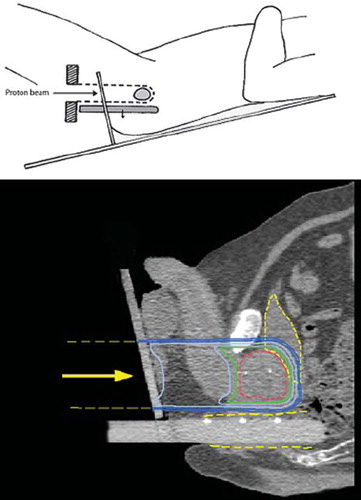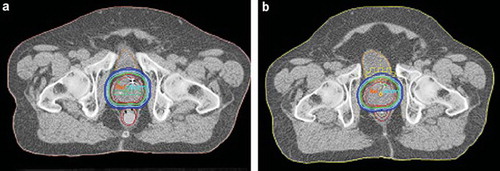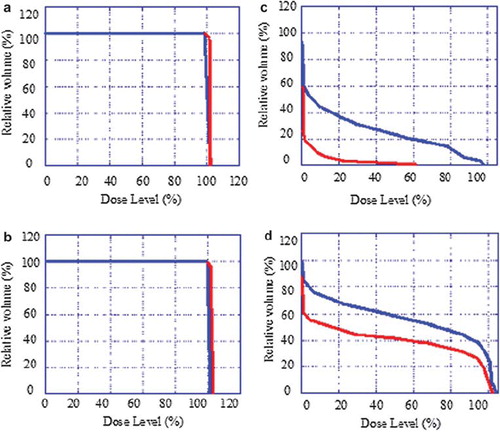Figures & data
Figure 1. The patients were positioned in lithotomy position (upper panel) and the couch allowed the patients to be tilted in the cranially-caudally direction to closely match the horizontal proton beam with the rectal wall (i.e. the rectal wall and the proton beam should be parallel). In order to displace the rectal wall posteriorly, a cylindrical rod of Perspex was inserted into the rectum. The rectum was retracted posteriorly in order to maximize the separation between the prostate gland and the rectal wall. The lower panel shows a sagittal section where the prostate (red), bladder and rectal wall (yellow) are indicated together with the dose distribution. The isodose levels displayed are 95%, 90%, 70%, 50% and 30%. The radiopaque gold markers can be seen both in the prostate and in the retractor.

Table I. The physical and the corresponding biological equivalent doses (BED) expressed in total dose given in 2 Gy daily fractions using an α/β-ratio of 3 and a RBE for protons of 1.1 for the two treatment plans.
Figure 2. Dose distributions in a transverse section through the central part of the prostate for one representative patient for the two different treatment plans (a) with and (b) without the rectal retractor. The isodoses displayed are 95% (green), 90 and 70% (light blue), 50 and 30% (dark blue) of the prescribed dose.

Table II. The V70 in cm3 and the D1% for the rectum wall volume for nine patients, for two proton treatment plans in combination with the photon plan with and without the use of the rectal retractor, respectively.

